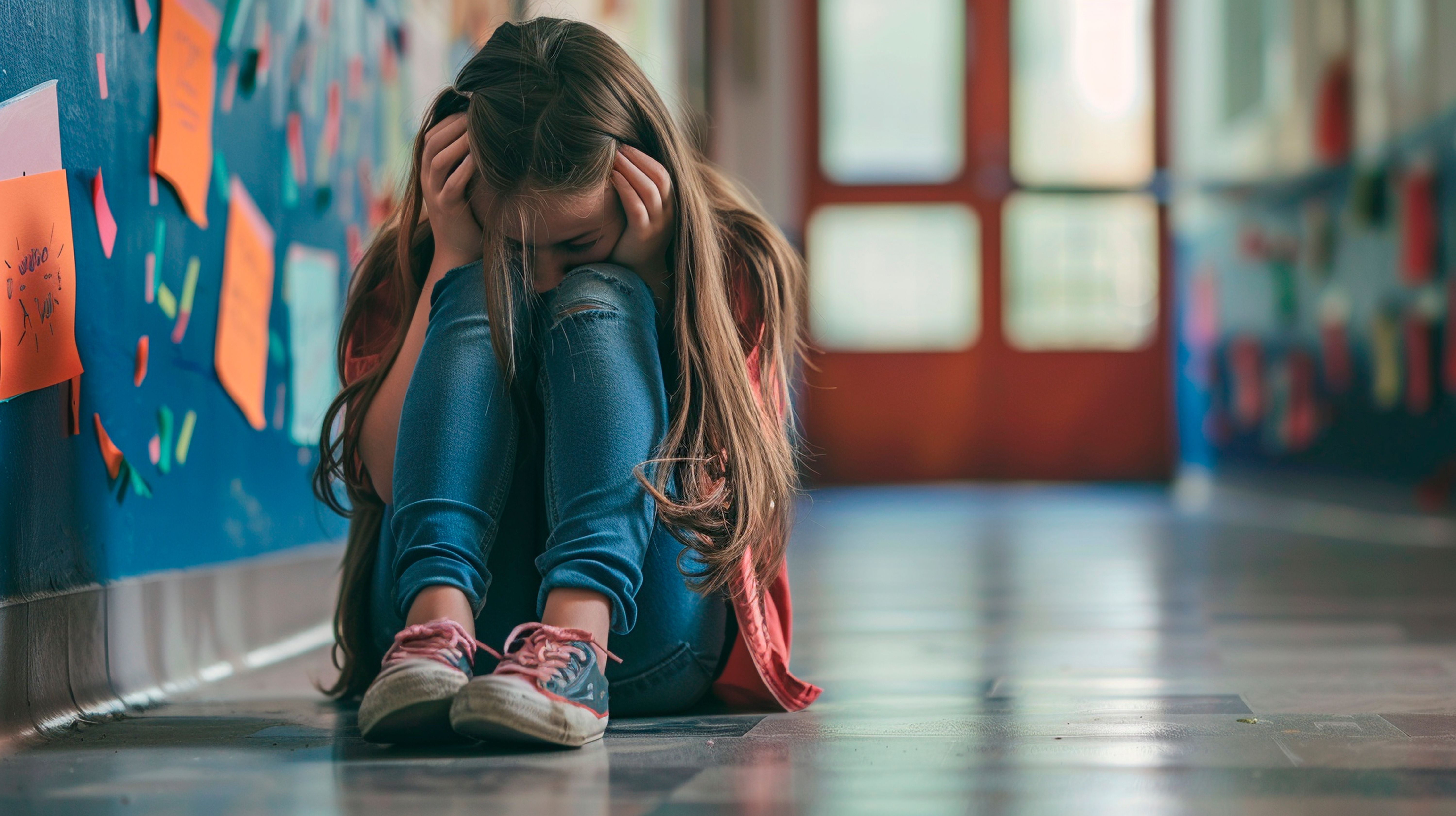News
Article
Psychiatric Times
Delirium: Don’t Miss It
Author(s):
Delirium: an underrecognized, underdiagnosed medical condition.
misu/AdobeStock

TALES FROM THE CLINIC
In this installment of Tales From the Clinic: The Art of Psychiatry, we discuss delirium, an underrecognized, underdiagnosed medical condition. Elderly patients, who experience more delirium than their younger counterparts, often receive a misdiagnosis. They may be mistakenly labeled as having a mental illness and given psychotropic medications that have an elevated adverse effect burden.
Case Study
“Mr Morris,” aged 70, had melanoma and, following treatment, is in remission. Mr Morris presents to your outpatient psychiatry clinic for an initial evaluation. He has never had medical issues otherwise and has never been diagnosed with a mental illness until a hospital stay about 6 months ago. His family provided collateral information. They were very concerned because, while he was hospitalized, he was “talking nonsense” and accusing his wife of 50 years of having an extramarital affair. He was also pacing and saying random things about memories which they thought were made up, such as the example above. Inquiring about this in your clinical assessment, the patient says, with some bashfulness, “Well, you know, we met at 15 and a lot of people liked her. I was the lucky one.” But he does not recall anything he said while hospitalized. He was discharged on haloperidol, but the family stopped it after reading about the black box warning for antipsychotics in older adults. A careful history taking is negative for psychotic symptoms including hallucinations, delusions, and disorganization, and for negative symptoms of psychosis. Since being home and off medications, he is back to his usual self.
You ask for medical records and find out that the medication was started after an episode during which the psychiatry consult and liaison service consulted for overnight confusion and agitation. Mr Morris had started to pull out his IV lines and catheter, then tried to undress and walk down the hallway, but was falling down, given physical weakness. The medication was not stopped upon symptom resolution and patient discharge.
Discussion
Mr Morris is diagnosed with delirium. According to the DSM-5, delirium is “a disturbance in attention and awareness” with an additional cognitive disturbance (eg, memory deficit, disorientation, language, visuospatial ability or perception) that develops over “hours to a few days,” “represents a change from baseline,” and “fluctuates in severity during the course of a day.” Furthermore, it is due to 1 or multiple underlying medical etiologies and is not better explained by another psychiatric diagnosis.1
There are 3 subtypes of delirium: hyperactive, hypoactive, and mixed. In our vignette, the acute agitation and interference with medical treatment quickly brings this patient to staff attention. However, the literature shows that delirium is missed in 57% to 83% of emergency department (ED) assessments, and in admitted patients, more than 90% of cases will be missed if it is not diagnosed in the ED.2 According to a prospective study in The University of Texas MD Anderson Cancer Center Emergency Medicine department, patients with cancer who presented with delirium are more likely to be admitted to the hospital, require an ICU admission, and have worse outcomes.3 In a retrospective chart review of 61 consecutive inpatient palliative care consultations in patients with cancer, 16% of the consultations were for delirium, yet delirium was diagnosed by the palliative care team in 56% of the patients.4 In patients with advanced cancer, terminal delirium prevalence rates approach 90% in end-of-life care.5,6
Delirium can be related to cancer, its treatment (ie, radiation, chemotherapy), and noncancer-related pathology. In delirium, there are unmodifiable factors that predispose a patient to developing the condition and there are precipitating factors that can be clinically addressed. Common predisposing factors that increase the risk of developing delirium include older age, a neurocognitive disorder, visual and hearing impairments, and chronic organ dysfunction. Precipitating factors to consider include psychoactive medications (including opioids and corticosteroids), infections, hypoxia, withdrawal, metabolic derangement, dehydration, and acute infections, especially pneumonia and urinary tract infections.
To improve the delirium, the precipitating cause or causes should be treated. Lawlor studied delirium in patients with advanced cancer and determined that reversibility was most common when addressing the precipitating factors of psychoactive medications, specifically opioids, and dehydration.6 The pathophysiology of delirium is complex, and there are hypotheses to explain the role of inflammation, oxidative stress, and neurotransmitters in the condition. Delirium is a state of low acetylcholine and high dopamine, which is important to consider when reviewing if a medication could be contributing to a patient’s delirium.
Psychoactive medications include opioids, benzodiazepines, antidepressants, antihistamines, and anticholinergics. When delirium develops, it is important to consider these medications as potential precipitating factors. Anticholinergics and antihistamines commonly worsen delirium and should be discontinued. The duration of use and dose of benzodiazepines should be closely examined in delirium because the sudden cessation of a medication on which a patient is dependent could produce a withdrawal delirium; however, ongoing use in a patient without tolerance could result in intoxication.
Opioid medications are frequently used for cancer-related pain. However, opioid toxicity can occur, especially with rapid dose escalation for pain control. Medication adjustments including opioid rotation are helpful in managing opioid toxicity and managing pain when side effects limit further uptitration.4 Opioid rotation is the practice of transitioning to a different opioid with the goal of optimizing the balance of pain control to side effects. The clinical practice guidelines for the European Society for Medical Oncology recommend opioid rotation, which can allow for dose reduction given opioid equianalgesic dosing.7
Corticosteroids are more likely to have psychiatric sequelae at higher doses. Findings from 1 study revealed that the rate of psychiatric reactions is 1.3%, 4.6%, and 18.4% at doses of prednisone less than 40 mg/day, 41 to 80 mg/day, and greater than 80 mg/day, respectively.8 Mania, psychosis, and delirium can develop in the acute course of corticosteroid use. Depression, which is part of the differential diagnosis for hypoactive delirium, is more likely to develop with chronic steroid use.8 Although corticosteroids can contribute to delirium, they can also improve cognition by decreasing edema secondary to primary or metastatic brain tumors.5 It is important to consider the timeline of symptom development and treatment when considering the impact of corticosteroids in delirium. Delirium secondary to corticosteroid exposure is likely to occur within 1 to 2 weeks and at a higher incidence for higher doses.8 Furthermore, delirium caused by corticosteroids has been associated with delirium-related distress.9 As clinically indicated, minimizing the dose and duration of treatment can improve delirium related to steroid administration.
Delirium is treated by correcting the precipitating factors; however, nonpharmacologic and pharmacologic strategies are used to assist in its management. Nonpharmacologic management includes frequent reorientation, patient access to glasses and hearing aids, familiar surroundings (consistent care team, family present or their pictures available), regulating sleep/wake cycles (lights on and blinds open the during day, but lights off and blinds closed at nighttime), clustering care to daytime hours, minimizing lines including IVs and urinary catheters, and encouraging patient mobilization.10 Regarding pharmacologic management, a 2018 Cochrane review of antipsychotic treatment in non-ICU delirious patients concluded that the current evidence to recommend for or against the use of antipsychotics is of low quality, as antipsychotic use had no statistically significant impact on delirium resolution or severity.11 In clinical practice, pharmacologic management with antipsychotics is primarily used to target distressing agitation, hallucinations, and delusions. In refractory agitated delirium, the involvement of palliative care and palliative sedation can also be considered.5
During the investigation into the etiology and treatment of delirium in a patient, it is important to consider the goals of care. When goals of care are addressed early, a patient’s wishes are known to the team and the substitute decision maker if a patient’s mentation becomes altered. Established goals of care at the end of life allow palliation while limiting more aggressive interventions if it is the patient’s desire. Aggressive interventions at end of life have been associated with worse patient quality of life and worse bereavement in their caregivers.12
Concluding Thoughts
It is always important to remember to consider the system you are treating, which is more than the patient. Breitbart et al showed that 53.5% of delirious patients recalled their delirium. Predictors of patients not recalling their delirium are greater “short-term memory impairment during the delirium episode, the severity of the delirium episode itself, and the presence of perceptual disturbances.” However, more severe hallucinations and delusions, corticosteroid-induced delirium, and poorer Karnofsky Performance Status (KPS) Scale scores were correlated with more delirium-related distress for patients.9 Caregivers are more likely to be distressed when the patient has a hyperactive delirium, brain metastases, and KPS scores below 30, which indicate “severe physical debilitation and near death.” Nursing staff are more likely to be distressed when a delirious patient has more severe delirium and hallucinations.9 While treating the delirium, consider the potential traumatic impact upon the patient, family, and staff, and offer ongoing support.
Dr Howse is a psychiatrist at Baylor College of Medicine in Houston, Texas, and a psychosomatic medicine specialist.
References
1. American Psychiatric Association. Diagnostic and Statistical Manual of Mental Disorders, Fifth Edition. American Psychiatric Publishing; 2013.
2. Han JH, Wilson A, Vasilevskis EE, et al. Diagnosing delirium in older emergency department patients: validity and reliability of the delirium triage screen and the brief confusion assessment method. Ann Emerg Med. 2013;62(5):457-465.
3. Elsayem AF, Bruera E, Valentine A, et al. Advance directives, hospitalization, and survival among advanced cancer patients with delirium presenting to the emergency department: a prospective study. Oncologist. 2017;22(11):1368-1373.
4. Braiteh F, El Osta B, Palmer JL, et al. Characteristics, findings, and outcomes of palliative care inpatient consultations at a comprehensive cancer center. J Palliat Med. 2007;10(4):948-955.
5. Lawlor PG, Bush SH. Delirium in patient with cancer: assessment, impact, mechanisms and management. Nat Rev Clin Oncol. 2015;12(2):77-92.
6. Lawlor PG, Gagnon B, Mancini IL, et al. Occurrence, causes, and outcome of delirium in patients with advanced cancer: a prospective study. Arch Intern Med. 2000;160(6):786-794.
7. ESMO Guidelines Committee. Guidelines. European Society for Medical Oncology. Accessed November 22, 2021. https://www.esmo.org/guidelines
8. Kenna HA, Poon AW, de los Angeles CP, Koran LM. Psychiatric complications of treatment with corticosteroids: review with case report. Psychiatry Clin Neurosci. 2011;65(6):549-560.
9. Breitbart W, Gibson C, Tremblay A. The delirium experience: delirium recall and delirium-related distress in hospitalized patients with cancer, their spouses/caregivers, and their nurses. Psychosomatics. 2002;43(3):183-194.
10. El Majzoub I, Abunafeesa H, Cheaito R, et al. Management of altered mental status and delirium in cancer patients. Ann Palliat Med. 2019;8(5):728-739.
11. Burry L, Mehta S, Perreault MM, et al. Antipsychotics for treatment of delirium in hospitalized non-ICU patients. Cochrane Database Syst Rev. 2018;6(6):CD005594.
12. Wright AA, Zhang B, Ray A, et al. Associations between end-of-life discussions, patient mental health, medical care near death, and caregiver bereavement adjustment. JAMA. 2008;300(14):1665-1673. ❒







